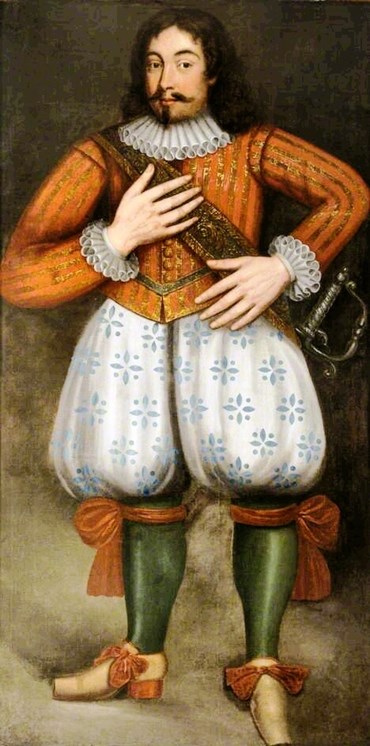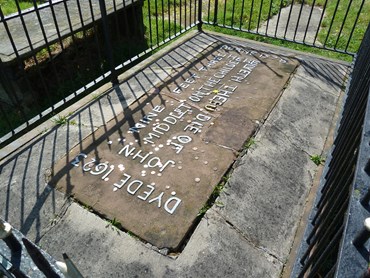
The fascinating tale of the Gentle Giant of Merseyside. A much-loved resident of the small Township of Hale, situated just to the south of Liverpool. He was kindly and popular with his neighbours, especially their children, but he was exploited by the selfish, local Lord of the Manor of Hale, Sir Gilbert Ireland.
The Childe of Hale ~ The Gentle Giant
Just to the south of Liverpool stands the ancient township of Hale, and it was here, in 1578, that John Middleton our local giant was born. He grew up and lived in a small, thatched, whitewashed cottage that still stands today almost unaltered; at least on the outside.
The remarkable thing about John was that, by age of twenty, he had grown to a height of 9 feet 3 inches, and he had been named locally as ‘The Childe of Hale’. This was not an ironic reference to his height but a genuinely affectionate term because of his simple nature and kindly personality. Soon, the ‘Childe of Hale’ became well known far outside his home village, and was renowned throughout England as being the 'tallest man in the world'!
Inside his cottage, with its low roof, the ceiling had to be removed so that he could stand upright and his hat pegs were set at 10 feet above the floor. Even so, the front and back doors remained normal size so John must have had to bend almost double to get in and out of his home!
Sir Gilbert Ireland (c.1559-1626) was Lord of the Manor of Hale at this time and, in 1604, because of John’s renown, he decided to employ the gentle giant as his personal bodyguard, ‘to walk with him; to stand behind his chair at meals; and to perform feats of strength for his friends'. However, this was more to add to his status as a minor aristocrat rather than for any practical purpose, although John was certainly powerfully-built and very strong.
The reputation of the ‘Childe of Hale’ had now spread so far that it had reached the ears of King James I in London. Wanting to see for himself if the stories were true, in 1617, the monarch invited Sir Gilbert and his gigantic manservant to come to the capital. Here, said the King, he would set John to fight his own Royal Champion who was described as being ‘a huge wrestler of prodigious proportions’!
Even though by this time John was now almost 40 years of age, he and Sir Gilbert made the long and arduous journey to London, going most of the way on foot! Before setting off however, and as they were going to London to see the King, Sir Gilbert presented John with a beautiful and colourful suit of new clothes for the trip. This was the talk of Hale and, in due course, of London and the Royal Court! A description of the outfit, written at the time, said,
‘They dizened him off with large lace ruffs about his neck and hands;
a striped doublet of crimson and white around his waist;
a blue girdle embroidered with gold;
large white plush breeches, powdered with blue flowers; green stockings;
broad shoes of a light colour, having high red heels and tied with bows of red ribbon;
and just below his knees were bandages of the same colour, with large bows.
By his side, a sword was suspended by a broad belt over his shoulder,
and embroidered as his girdle, with blue and gold,
and with the addition of a gold fringe upon the edge.'
This must have been a spectacular suit indeed, especially for such a large and otherwise ordinary man. Nevertheless, there is every reason to assume that John was very proud of his appearance, as was Sir Gilbert. A life-size portrait of John, in his ‘London’ clothes and painted at the time, still hangs in Speke Hall, close to John’s home village.
The wrestling match for the King was ‘no-contest’, with John Middleton winning the bout by a throw and snapping the thumb of James’s champion in the process. John’s prize was a 20 guinea purse, even though the result infuriated the King, and his courtiers, because most of them had bet heavily against ‘the peasant from the north’! Because of this, John and Sir Gilbert were made to feel very unwelcome and were encouraged to leave London right away. And so, the two men began to make their way home, but via Brasenose College in Oxford, where Sir Gilbert had been a student. Sir Gilbert stayed on here for some time meeting up with old friends and John was the toast of the university city.
However, John only stayed a few days and soon left to continue his journey on his own and, just outside Oxford, he fell in with some fellow travellers. Sadly, these men were not the new friends that naïve and simple John had taken them to be. His new companions understood only too well who John was, and how much money he was carrying. They were footpads and, no matter how big he was, the kindly man was outnumbered and out-matched by this gang of thugs.
At an isolated spot on the long trek home they set upon him, beat him severely, stole his clothes to leave him virtually naked, and robbed him of his prize-purse. Injured and humiliated, John had to complete his journey in pain and completely alone.
Even though he arrived back to a very warm welcome and the love and care of his own community at Hale, John was now a much poorer man than when he had set off. This was especially the case because his stolen prize-money was to have been his pension.
Nevertheless, the ‘Childe of Hale’ was cherished by his fellow villagers, particularly the children, and his simple manner and childlike ways ensured that he was never lonely or short of friendship, even though he never married or had children of his own. However, John Middleton received no compensation from Sir Gilbert when the Lord of the Manor returned home himself. He simply allowed John to continue to work for him, but only as a field had. In fact, in the records of the time it was reported that John ‘was oblig’d to follow the plow to his dying day’. The work must have been very hard, even for someone as strong as John, or perhaps his severe beating had weakened him because six years later, in 1623, John died at the age of only forty-five.
The gentle ‘Childe of Hale’ now lies in the burial ground of his village church of St. Mary. His grave is surrounded by railings, marking out John Middleton, quite rightly, as someone very special indeed.






